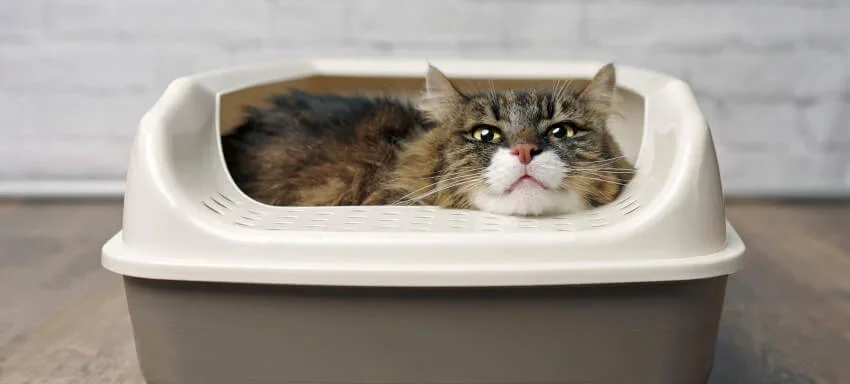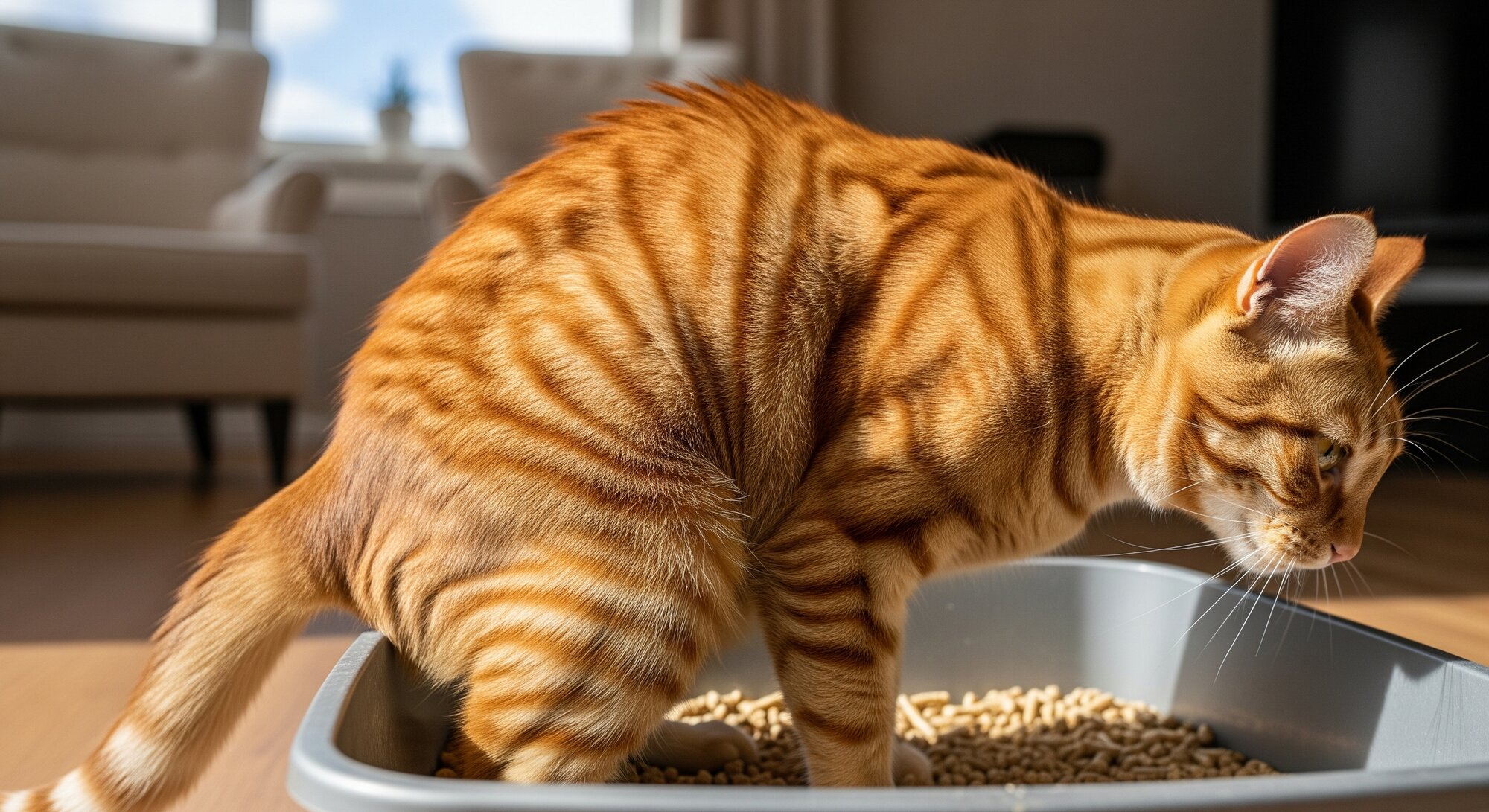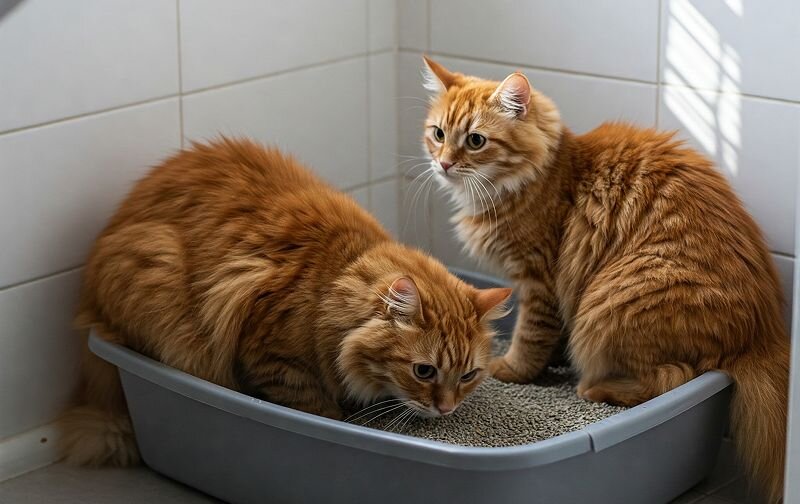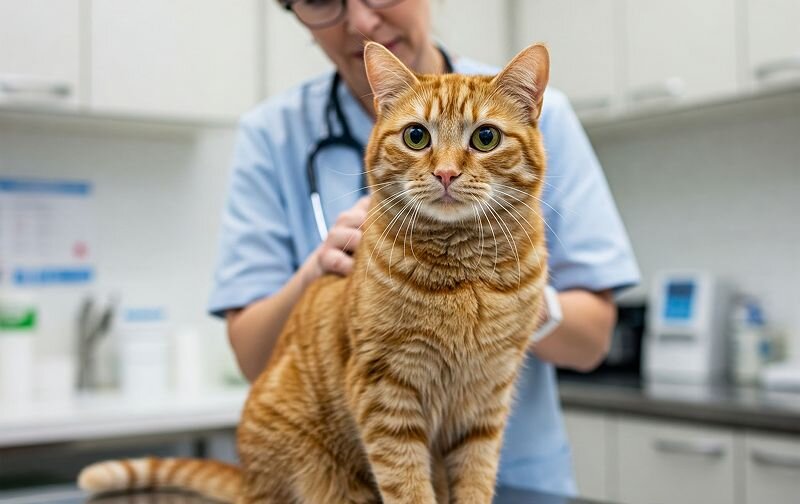Last Updated: 23/07/2025
How to Stop Cat Litter Smelling
Finding it difficult to keep on top of litter box odours? Learn all the expert tips from our Vets to keep those nasty smells at bay.
Author: Dr Jacqui Victor BVSc MANZCVS (Medicine of Cats)
Reading Time: 8 minutes - short read
We all love our cats, but that doesn't mean we love those litter box smells! Keeping your cat's litter smelling fresh at all times is key for keeping your nose, and your cat, happy.
From litter box hygiene, to the best litter types and boxes for controlling smells - we have put together a handy guide on how best to keep those nasty smells at bay!
Litter box hygiene

Litter box tips to reduce odours:
- Scoop wastes at least once to twice a day
- Clean out litter trays and replacing with fresh litter at least once a week
- Replace litter trays once a year
- Use a deodoriser
- Use litter tray liners
Regular cleaning
Cats are very clean creatures, so it's important to ensure their litter boxes are kept clean at all times! Ensuring your cat always has clean litter encourages them to toilet regularly and also prevents them from searching for other inappropriate areas in your home to do their business, creating unwanted smells throughout your home. Having clean toileting areas also helps decrease stress, which is a known risk factor for many urinary issues in cats.
There is no doubt that the best way to reduce litter box odours is to get rid of the smell itself! Scooping out wastes at least once to twice a day is imperative. Clumping litter can help make this task easier, and self-cleaning litter boxes make it even easier still, as they do the work for you! Make sure you have a sturdy kitty litter scoop that has small slits (but still large enough to let loose litter through) as you want to remove as much of the waste as possible - even the bits that didn't quite clump with the rest, as these can retain unpleasant odours.
Litter replacement
Each specific litter type and brand will have it's own recommendations regarding frequency of changing, however a good general rule is to completely empty, clean and replace the litter at least once a week to help remove any stubborn smells. Wash out the box with a mild detergent, then rinse and dry thoroughly before replacing with fresh litter. Litter should be at least 2-3 inches deep, to ensure your cat can properly cover their waste and the urine can be completely absorbed.
Deodorisers
Cats have a much stronger sense of smell than us, so avoid simply trying to cover up the smell of the litter with perfumes and air fresheners, as many cats will resent this and instead choose to toilet elsewhere. Instead, use a deodoriser which neutralises the odour (instead of masking it) to help keep your cat's litter smelling clean.
Replace litter trays and use litter liners
Replacing your cat's litter boxes once a year can also help keep your cat's box smelling fresh. Plastic litter boxes can get damaged over time as your cat scratches the bottom, and these small grooves can retain odour. Using litter liners can help slow down this process, as well as making your clean up process much quicker.
Keep in mind, in multi-cat households you will need to do more frequent scoops and litter changes - cleaning frequency depends on the number of cats you have as well as their toileting frequency.
Choice of Litter

Litter choices to help reduce odours:
- Clumping litters
- Scented litters
- Crystal litter
- Corn litter
It's important to invest in a good quality litter, as some cheaper litters don't absorb odours very well or clump quickly, doing little to help with odours.
There are so many different varieties of litter substrates available nowadays including clay, crystal, tofu, corn, recycled paper and wood. Then there's clumping vs non-clumping litter - so which is best for reducing odours?
Clumping litter is much better than non-clumping in terms of odour control. Clumping technology involves litter bonding with urine to form easy to remove clumps, and helps lock odours away inside these clumps. Clumping litter therefore helps keep your cat's litter tray smelling fresher for longer.
In terms of litter substrates, crystal litter is great at reducing odours, as it is made from silica gel which is highly effective at absorbing moisture and unpleasant odours. Corn litter is highly absorbent and therefore also provides high odour control.
If you are looking to switch over your cat's litter type, it's important that this is done gradually over the course of a week to help minimise stress and increase their acceptance of the new litter type. Gradually add the new litter to your cat's existing litter (keeping the old litter as the top layer), increasing the ratio until you've done a complete transition. During this transition period, keep an extra litter tray with 100% of your cat's original litter type and only remove it once they are comfortable using the new litter type, so they don't hold on or toilet elsewhere! Having Feliway on board will also help to reduce stress associated with this change.
If you're looking to change over your cat's litter type, we recommend the following:
- Day 1 & 2: 25% new litter and 75% old litter (as top layer).
- Day 3 & 4: 50% new litter and 50% old litter (as top layer).
- Day 5 & 6: 75% new litter and 25% old litter (as top layer).
- Day 7 onwards: 100% new litter.
There are also scented litters on the market which can help mask the smell for us, however it's important to note that as cats are sensitive to smells, not all cats will take to scented litter. Most cats tend to prefer unscented litter, and so using this along with regular scooping and a deodorizer may be a better alternative to keep your kitty happy. If you were wanting to trial a scented litter, do this gradually as mentioned above, and it's so important to leave out a litter box filled completely with your cat's old litter until they are completely comfortable using their new scented litter, otherwise they may be forced to toilet elsewhere.
Vet picks for odour-reducing litter
Litter Tray Factors

Litter tray factors to help reduce odours:
- Place litter boxes in well-ventilated areas
- Ensure enough litter boxes for the number of cats, to avoid toileting and odours in inappropriate places
- Consider a litter box with built-in odour control features, or a hooded design
- Consider a self-cleaning litter box which automatically removes wastes
Litter Preference
Each cat will also have their own preference of litter type (such as clay, crystal, tofu, corn, wood) and so it's important to choose a litter box that is compatible with your cat's preferred litter substrate. Ensuring your cat has their preference of litter box and litter type helps promote regular toileting habits, decreases stress and prevents the development of urinary issues.
Litter tray location and accessibility
Cats like to have choices of where to do their business. The ideal number of litter trays is "1 litter tray per cat, plus one extra" (eg if you have 2 cats then you would need to provide 3 litter trays in your home, ideally in separate areas). If you had multiple cats at home, make sure to place the trays in an area with 2 way access, as in some households one cat will block off the entrance to the box forcing the other to do their business elsewhere. Also make sure the litter trays are located in a quiet area, away from any loud noises such as washing machines, and in a separate location to their food and water bowls.
The general rule of thumb is: one litter tray per cat, plus one extra.
Although it may be tempting to tuck your cat's litter boxes out of sight in a small laundry or bathroom, confined spaces with poor air circulation can concentrate smells, making it much worse. Keeping the litter boxes in quiet, low-traffic, well-ventilated areas will help to disperse odours. If you have an enclosed catio, this is a perfect area to put one of your cat's litter trays as there is plenty of air circulation. Also make sure to open windows and doors nearby to allow fresh air in regularly.
Also make sure to invest in a high quality litter box, and there are many on the market which are designed to contain and minimise odours. Look for ones with built-in odour control features or those with hooded litter box designs, as these contain odours more effectively than open boxes. Just keep in mind that each cat has their own preference of litter box type, so not all cats will welcome an enclosed litter box with open paws.
Self-cleaning litter boxes are a convenient and effective way to provide a consistently clean environment for your feline friend. They come equipped with sensors triggered by your cat's weight to automatically remove waste once your cat leaves to reduce odours and eliminating the need for manual daily scooping. Many self-cleaning boxes also assist in health monitoring by tracking your cat's toileting habits.
Health Concerns

Undesexed male cats excrete high levels of hormones like testosterone in their urine to mark their territory, making their urine more smelly. Desexing your male cat can help reduce urine odour as well as numerous other health benefits.
If you have noticed that your cat's wastes have suddenly become more smelly, or if there have been any other changes in your cat's toileting habits (such as toileting elsewhere in your home), it is important to seek veterinary attention to rule out any underlying health conditions.
Ultimately, keeping your home free from cat litter smells is a manageable task that hinges on a combination of consistent hygiene, smart product choices, and a thoughtful setup. The cornerstone of odour control is diligent, daily scooping and regular, thorough cleaning of the litter box itself.
By selecting a high-quality clumping or crystal litter, you can effectively trap odours at the source. Furthermore, considering the placement of the litter box in a well-ventilated area and choosing a design - whether it's a simple hooded box or a sophisticated self-cleaning model - that suits both your cat's comfort and your lifestyle can make a significant difference.
Remember, a sudden change in odour can also signal a health issue, so always consult your vet if you have concerns. By implementing these practical strategies, you can ensure a clean, fresh-smelling environment that keeps both you and your feline companion happy and healthy.
Further Reading
Want to read more? Check out our other articles:
Best Self-Cleaning Litter Boxes

